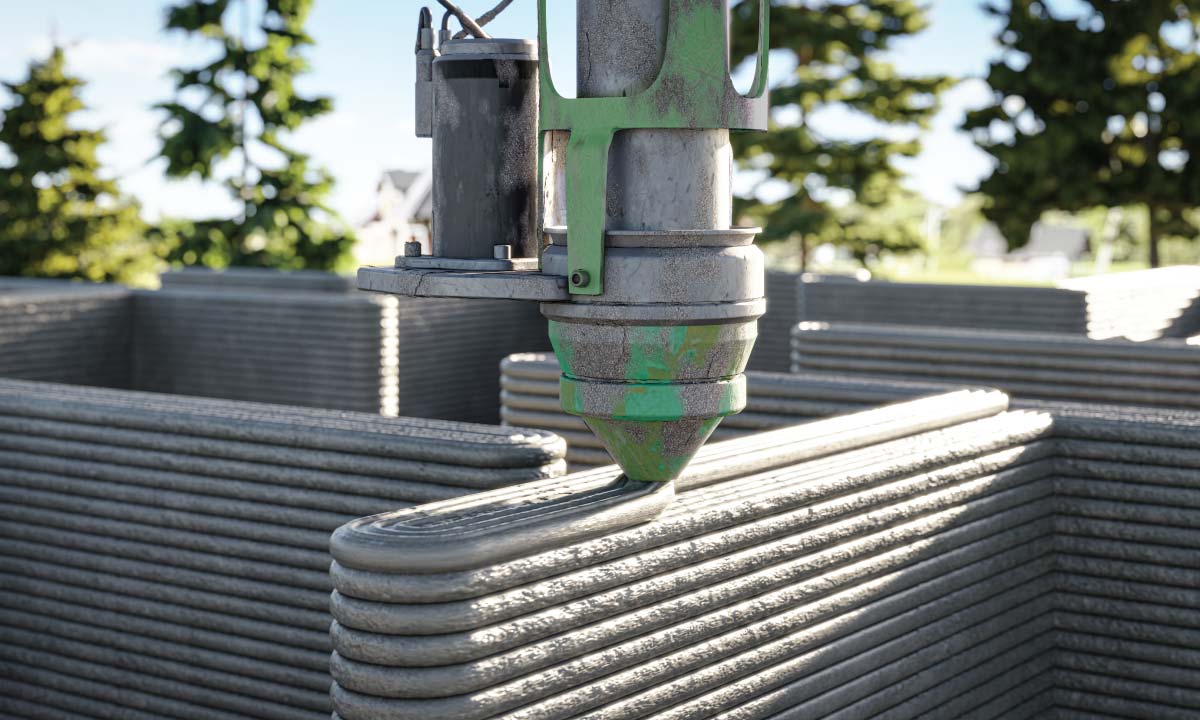The early 1980s witnessed the birth of stereolithography, also known as three-dimensional (3D) printing. While its earliest applications were in research and development laboratories, this technology has now permeated the construction sector. The surge in 3D-printed real estate is reshaping skylines globally, notably in the Middle East, heralding a new era of architectural transformation.
World’s tallest 3D building
In March, Saudi Arabia celebrated the completion of the world’s tallest 3D-printed building – a three-story villa situated in Shams Al Riyadh, reaching a height of 9.9 meters and spanning an area of 345 square meters. Dar Al Arkan, a leading real estate developer, used a COBOD machine for concrete 3D printing to create this groundbreaking property.
Impressively, the villa was completed in a mere 26 days even amid the scorching summer conditions of the country. This rapid construction not only saved significant time but also demonstrated the resilience of 3D printing technology in challenging environmental settings.
Beyond its innovative 3D printing aspect, the villa incorporates smart home features. Its exterior walls boast heat-reflecting nano-technology, rendering it 40 percent more heat-resistant than traditional counterparts. Aligning with Saudi Vision 2030, an initiative aimed at modernizing the construction sector, 3D printing, in conjunction with other cutting-edge technologies, is primed to propel the industry forward.
The Ministry of Housing highlighted in a statement that “in Saudi Arabia, we are rapidly developing in the construction sector through our Building Technology Initiative and implementing new technologies to enable 70 percent of the Saudi population to own their homes by 2030. Our strategy is to revolutionize the way people think about home through smart futuristic methods.”
Read: Dubai’s booming real estate market drives TECOM’s 13 percent profit increase in H1
3D prefabricated homes
Saudi Arabia’s goal to improve its construction sector and home ownership rate received a fresh boost this month as U.S.-based 3D home construction firm Mighty Buildings announced that it raised $52 million worth of funding. Wa’ed Ventures, a venture capital backed by oil company Saudi Aramco, led the funding.
With this milestone, Mighty Buildings, which has already built 50 prefabricated homes, will be able to establish factories not just in Saudi Arabia but also in the United Arab Emirates. According to the company, these two Middle Eastern nations are among the world’s fastest-growing markets.
Speaking on their investment, Wa’ed Ventures Managing Director Fahad Alidi said, “Our investment in the company reflects our belief that innovative materials, as those used in Mighty Buildings’ proprietary 3D printing, will be a major driver for scalability and sustainability of homebuilding in the Gulf region.”
More to come
3D-printed prefabricated residential units aren’t the sole projects set to occupy lands in the region. Dubai, in particular, is developing a groundbreaking 3D-printed mosque in Bur Dubai, slated to be operational by 2025.
The mosque, utilizing 3D printing technology, is a pioneering endeavor, capable of accommodating approximately 600 worshippers as per the Department of Islamic Affairs and Charitable Activities.
In addition, Dubai currently boasts the world’s largest 3D-printed building by volume, a two-story structure standing 9.5 meters tall with a floor area of 640 square meters. Constructed for the Dubai Municipality by US-based Apis Cor, the project notably reduced labor costs by over 50 percent compared to conventional buildings of similar size, while also effectively minimizing on-site waste.
Apis Cor previously made headlines for its remarkable feat of 3D printing an entire house within a single day.
Meanwhile, the emirate of Sharjah witnessed a significant milestone in 2021 with the completion of the UAE’s first 3D-printed villa. Designed by Middle East Engineering Technologies, this sustainable home, crafted with eco-friendly cement, was efficiently 3D-printed using a robotic system, completing the construction in just under two weeks.
On a parallel note, ACCIONA’s 3D-printed bus stop in Ajman reinforces the UAE’s dedication to innovation and sustainability, being erected in less than 10 hours.
These endeavors underscore the speed and cost-effectiveness of 3D printing. Yet, the paramount advantage lies in customization, allowing for unparalleled design flexibility and seamless integration of sustainability practices.
While the initial investment remains relatively high, the long-term benefits are substantial and should not be underestimated. With each successful real estate project, it becomes increasingly evident that 3D printing is reshaping skylines, one innovative building at a time.
For more news on real estate, click here.








